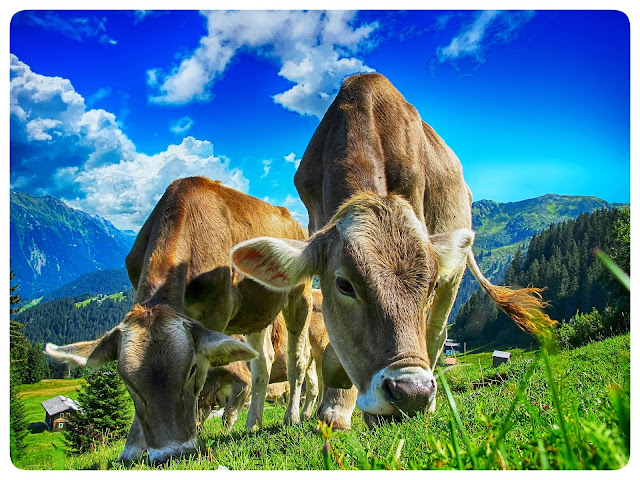Rosie, the world's first transgenic cow, stands as a turning point in the history of biotechnology and animal genetics. Born in 1997 at the University of California, Davis, Rosie emerged as a key achiever, ushering in a new era in the field of genetic engineering and agricultural innovation.
Rosie's vital coronary heart has her precise genetic make-up, which Dr. James Robles Carefully crafted using a team of leading researchers assisted by Dr. Gary Anderson. His imagination and presupposition was bold yet transformative to engineer a cow capable of producing human protein-rich milk, which would revolutionize every dairy enterprise and clinical technology. As these cow is considered as it gives human protein rich milk which is beneficial for new born babies.
>>Also Read :
Agriculture Drone's : Types, Application And Benefits Of Using Drones In Agriculture
The journey to create Rosie began with the identification of the target gene responsible for encoding the desired human protein. In Rosie's case, the hobbyist gene changed alpha-lactalbumin, an important component of human milk known for its nutritional benefits, mainly for infants. With the gene in hand, the researchers began the complex task of introducing it into Rosie's genetic blueprint.
This pathway involves a series of complex techniques including microinjection, somatic cellular nuclear switch, and embryo transfer. Through these methods, the researchers correctly incorporated the human alpha-lactalbumin gene into Rosie's genome, ensuring robust expression within her mammary glands.
>>Also Read :
How To Protect Agricultural Commodities From Fraud Before Selling In Market ?
The effects of Rosie's arrival were profound and far-reaching. By giving her the ability to deliver human protein-rich milk, the researchers aim to meet societal needs. This cow's milk is rich in protein.
From a methodological point of view, Rosie's lifestyle underscored the exceptional versatility of genetic manipulation techniques and their ability to reshape the natural landscape. Her introduction verified that with specific genetic engineering, animals might be endowed with new trends that transcend their herbal genetic barriers.
Furthermore, Rosie's story exemplifies the convergence of agricultural and scientific biotechnology, illustrating how advances in one field can catalyze improvements in each of the different fields. The threat of using transgenic farm animals as bioreactors to produce pharmaceutical proteins opened up new avenues for drug improvement and production.
>>Also Read :
Subsoiler Overview : Types, Benefits & Use In Hard Compact Soil
Still, Rosie's adventure was not without its tense situations and controversies. The ethical issues surrounding animal welfare, environmental impacts, and unintended consequences of genetic modification are enormous. Critics have expressed concern about the long-term safety and sustainability of transgenic livestock production, raising legitimate concerns of predictable potential risks and unintended consequences.
New innovations in making transgenic cow will also help in improving milk production of world by making new genetically changes. As Rosie is an Example for us which make lot of changes and improvement in future dairy industry. As her pioneering work in the development of transgenic livestock paved the way for further improvements in biotechnology and agricultural genetics. Furthermore, Rosie's story reminds us of the profound interrelationships between technology, society, and the herbal global.
>>Also Read :
Type Of Irrigation System In Agriculture
>>Also Read :
What Is Greenhouse Technology In Agriculture ?
>>Also Read :
Health Benefits Of Eating Bajara In Regular Diet







